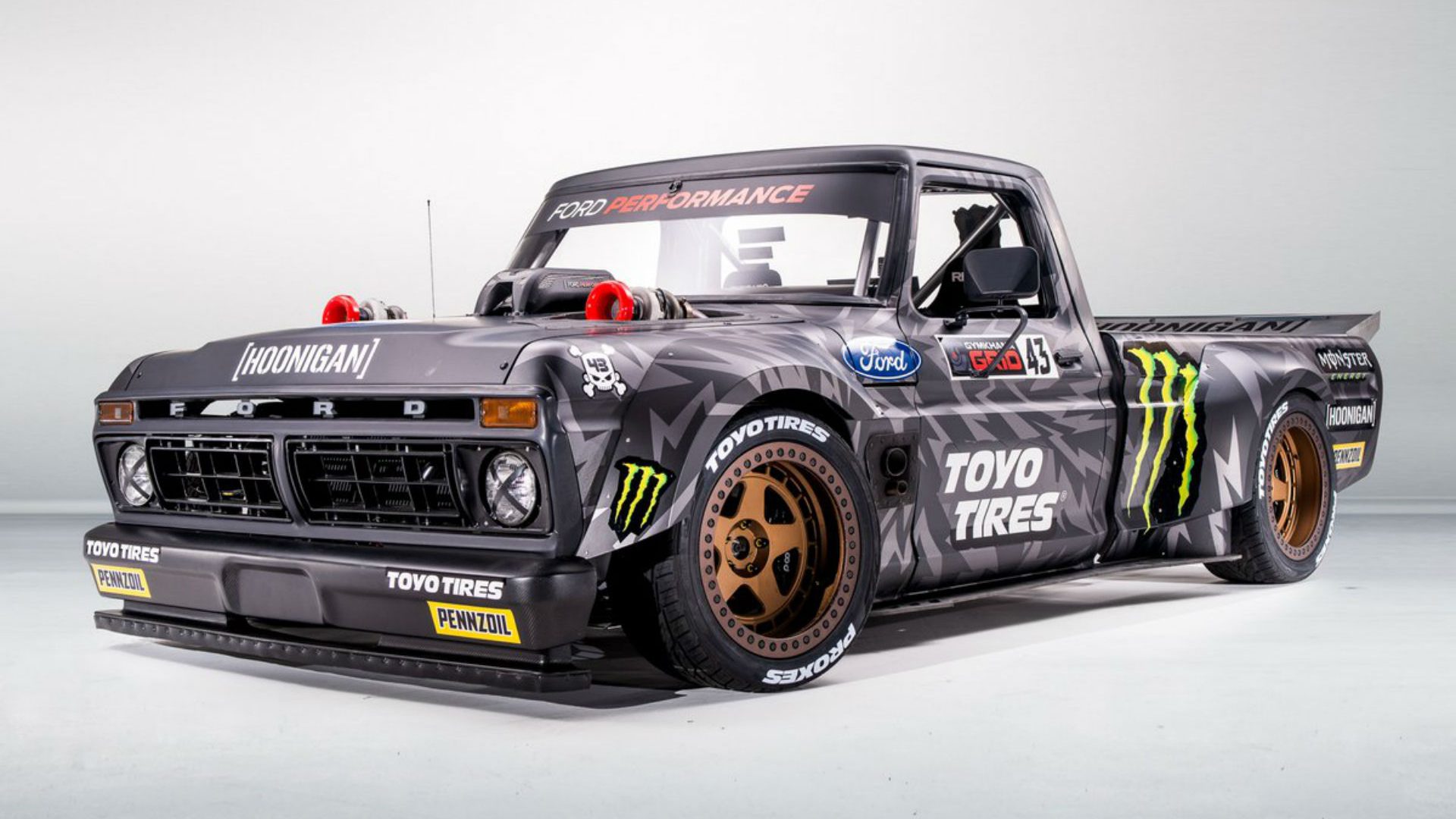

Of all the vehicles featured in Ken Block’s Gymkhana 10, his 900-horsepower Hoonitruck is arguably the most high-tech. Alongside all the complex electronics required to run the high-powered engine and all-wheel-drive system, it features the single largest 3D printed metal component ever fitted to a wheeled vehicle.
In order to make the 900-plus horsepower necessary for all that tire smoke, a twin-turbo, 3.5-liter V6 of the same spec as that found in the Ford GT supercar was dropped into the 1977 F-150, but its base power of 647 horsepower wasn’t quite enough to do the job. The solution—more boost—is simple on paper, but required an intake manifold capable of withstanding the greater pressures associated with cramming extra air into the engine.
Ford Performance’s answer to the quandary was to contract the Digital Additive Production Institute of German technical college RWTH Aachen, which advised the automaker on how to turn its conceptual manifold into a reality using additive manufacturing—known better as 3D printing. Though it takes time, additive manufacturing is typically less wasteful than machining and capable of more intricacy than casting.
By gradually adding aluminum over a period of five days, layer by tiny layer, Ford built up the complex, six-kilogram (13.2-pound) part, which juts up from the Hoonitruck’s low hood, the crown jewel of the engine.
“I think Ford did an exceptional job,” Block said of the manifold. “This is my favorite part of the Hoonitruck. You could not have made it any other way.”

“We are fortunate to have access to incredible technology, but this was one project that pushed us—and our computing power—to the absolute limit,” added Advanced Materials and Processes Engineer Raphael Koch, from Ford of Europe. “The manifold has a complex web‑like structure that couldn’t be made using traditional manufacturing methods. We ended up dissolving the support systems in acid.”

Automakers and aftermarket suppliers alike are turning to 3D printing for more parts as the technology matures. General Motors is readying a handful of cutting-edge components manufactured using 3D printing for use in low-volume vehicle applications, while wheel manufacturer HRE has demonstrated that additive manufacturing can be used to create elaborately designed titanium wheels for use on exotic cars. At this rate, it may not be long before 3D printed parts appear in your next commuter.